标签:情况 没有 基础 宕机 开发 生产 ehcache ppi 项目配置
Ehcache是纯java的开源缓存框架,具有快速、精干等特点,是Hibernate中默认的CacheProvider。它主要面向通用缓存、Java EE和轻量级容器,具有内存和磁盘存储、缓存加载器、缓存扩展、缓存异常处理程序。
Ehcache最初由Greg Luck于2003年开始开发。2009年,该项目被Terracotta购买。软件仍然开源,但一些新的主要功能(例如,快速可重启性之间的一致性的)只能在商业产品中使用。
Ehcache 被广泛用于在Hibernate、Spring、Cocoon等其他开源系统。
Ehcache是用来管理缓存的一个工具,其缓存的数据可以是存放在内存里面的,也可以是存放在硬盘上的。其核心是CacheManager,一切Ehcache的应用都是CacheManager开始的。它是用来管理Cache(缓存)的,一个应用可以有多个CacheManager,而一个CacheManager下又可以有多个Cache。Cache内部保存的是一个个的Element,而一个Element中保存的是一个key和value的配对,相当于Map里面的一个Entry。
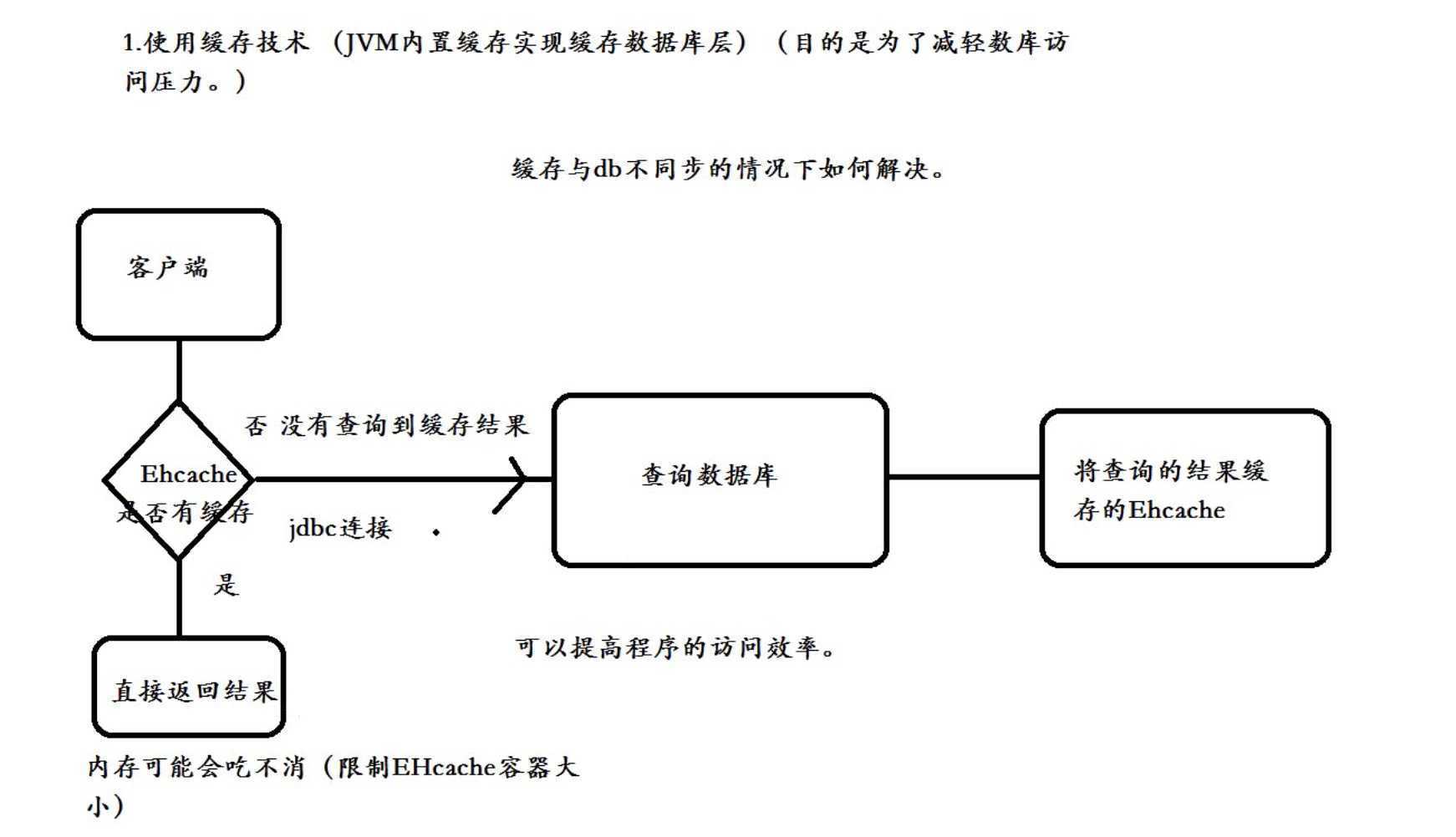
当缓存需要被清理时(比如空间占用已经接近临界值了),需要使用某种淘汰算法来决定清理掉哪些数据。常用的淘汰算法有下面几种:
项目中什么场景下会发生缓存与db不同步的问题
在生产环境下,是不可能随意直接改变数据库值。
update (修改)或者del (删除)
update语句后面加上主动通知。
先修改,修改成功之后,在主动清理缓存,这是在同一个事务中。
改完了再清缓存啊万一修改失败呢?
定时JOB健康检查
SpringBoot2.0整合Ehcache框架
<!--开启 cache 缓存 -->
<dependency>
<groupId>org.springframework.boot</groupId>
<artifactId>spring-boot-starter-cache</artifactId>
</dependency>
<!-- ehcache缓存 -->
<dependency>
<groupId>net.sf.ehcache</groupId>
<artifactId>ehcache</artifactId>
<version>2.9.1</version><!--$NO-MVN-MAN-VER$ -->
</dependency>
###端口号配置
server:
port: 8081
###数据库配置
spring:
datasource:
url: jdbc:mysql://localhost:3306/test
username: root
password: root
driver-class-name: com.mysql.jdbc.Driver
test-while-idle: true
test-on-borrow: true
validation-query: SELECT 1 FROM DUAL
time-between-eviction-runs-millis: 300000
min-evictable-idle-time-millis: 1800000
# 缓存配置读取
cache:
type: ehcache
ehcache:
config: classpath:app1_ehcache.xml
@MapperScan(basePackages = { "com.itmayiedu.mapper" })
@EnableCaching
@SpringBootApplication
public class App {
public static void main(String[] args) {
SpringApplication.run(App.class, args);
}
}
// @EnableCaching 开启ehcache缓存模式
@CacheConfig(cacheNames = "userCache")
public interface UserMapper {
@Select("SELECT ID ,NAME,AGE FROM member where id=#{id}")
@Cacheable
List<Users> getUser(@Param("id") Long id);
}
//@Cacheable 加了该注解的方法表示可以缓存
//@CacheConfig 表示创建缓存配置,Key为userCache
app1_ehcache.xml
<?xml version="1.0" encoding="UTF-8"?>
<ehcache xmlns:xsi="http://www.w3.org/2001/XMLSchema-instance"
xsi:noNamespaceSchemaLocation="http://ehcache.org/ehcache.xsd">
<diskStore path="java.io.tmpdir/ehcache-rmi-4000" />
<!-- 默认缓存 -->
<defaultCache maxElementsInMemory="1000" eternal="true"
timeToIdleSeconds="120" timeToLiveSeconds="120" overflowToDisk="true"
diskSpoolBufferSizeMB="30" maxElementsOnDisk="10000000"
diskPersistent="true" diskExpiryThreadIntervalSeconds="120"
memoryStoreEvictionPolicy="LRU">
</defaultCache>
<!-- demo缓存 -->
<cache name="userCache" maxElementsInMemory="1000" eternal="false"
timeToIdleSeconds="120" timeToLiveSeconds="120" overflowToDisk="true"
diskSpoolBufferSizeMB="30" maxElementsOnDisk="10000000"
diskPersistent="false" diskExpiryThreadIntervalSeconds="120"
memoryStoreEvictionPolicy="LRU">
<cacheEventListenerFactory
class="net.sf.ehcache.distribution.RMICacheReplicatorFactory" />
<!-- 用于在初始化缓存,以及自动设置 -->
<bootstrapCacheLoaderFactory
class="net.sf.ehcache.distribution.RMIBootstrapCacheLoaderFactory" />
</cache>
</ehcache>
参数相关配置说明:
defaultCache标签:默认的管理策略,Ehcache 使用Map集合实现的 element 其实就是 key 和value
@Autowired
private CacheManager cacheManager;
@RequestMapping("/remoKey")
public void remoKey() {
cacheManager.getCache("userCache").clear();
}
由于 EhCache 是进程中的缓存系统,一旦将应用部署在集群环境中,每一个节点维护各自的缓存数据,当某个节点对缓存数据进行更新,这些更新的数据无法在其它节点中共享,这不仅会降低节点运行的效率,而且会导致数据不同步的情况发生。例如某个网站采用 A、B 两个节点作为集群部署,当 A 节点的缓存更新后,而 B 节点缓存尚未更新就可能出现用户在浏览页面的时候,一会是更新后的数据,一会是尚未更新的数据,尽管我们也可以通过 Session Sticky 技术来将用户锁定在某个节点上,但对于一些交互性比较强或者是非 Web 方式的系统来说,Session Sticky 显然不太适合。
将上面的app1_ehcache.xml复制一份,命名为app2_ehcache.xml
这两个XML文件分别添加如下配置:
app1_ehcache.xml:
<!-- 多台机器配置 rmiUrls=//192.168.8.32:400002/demoCache|//192.168.5.231:400003/demoCache -->
<cacheManagerPeerProviderFactory
class="net.sf.ehcache.distribution.RMICacheManagerPeerProviderFactory"
properties="peerDiscovery=manual,rmiUrls=//127.0.0.1:5000/userCache">
</cacheManagerPeerProviderFactory>
<!-- 配置 rmi 集群模式 -->
<cacheManagerPeerListenerFactory
class="net.sf.ehcache.distribution.RMICacheManagerPeerListenerFactory"
properties="hostName=127.0.0.1,port=4000,socketTimeoutMillis=120000" />
<!-- 多播方式配置 搜索某个网段上的缓存 timeToLive 0是限制在同一个服务器 1是限制在同一个子网 32是限制在同一个网站 64是限制在同一个region
128是限制在同一个大洲 255是不限制 <cacheManagerPeerProviderFactory class="net.sf.ehcache.distribution.RMICacheManagerPeerProviderFactory"
properties="peerDiscovery=automatic, multicastGroupAddress=224.1.1.1, multicastGroupPort=40000,
timeToLive=32" /> -->
app2_ehcache.xml:
<!-- 多台机器配置 -->
<cacheManagerPeerProviderFactory
class="net.sf.ehcache.distribution.RMICacheManagerPeerProviderFactory"
properties="peerDiscovery=manual,rmiUrls=//127.0.0.1:4000/userCache">
</cacheManagerPeerProviderFactory>
<cacheManagerPeerListenerFactory
class="net.sf.ehcache.distribution.RMICacheManagerPeerListenerFactory"
properties="hostName=127.0.0.1,port=5000,socketTimeoutMillis=120000" />
<!-- 多播方式配置 搜索某个网段上的缓存 timeToLive 0是限制在同一个服务器 1是限制在同一个子网 32是限制在同一个网站 64是限制在同一个region
128是限制在同一个大洲 255是不限制 <cacheManagerPeerProviderFactory class="net.sf.ehcache.distribution.RMICacheManagerPeerProviderFactory"
properties="peerDiscovery=automatic, multicastGroupAddress=224.1.1.1, multicastGroupPort=40000,
timeToLive=32" /> -->
修改yml文件分别以8080端口+app1_ehcache.xml 和 8081端口+app2_ehcache.xml启动SpringBoot项目:
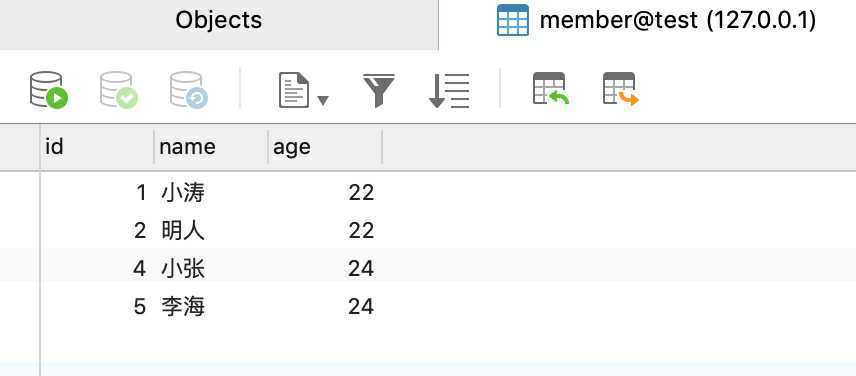
http://127.0.0.1:8080/getUser?id=2 可以正常查到数据: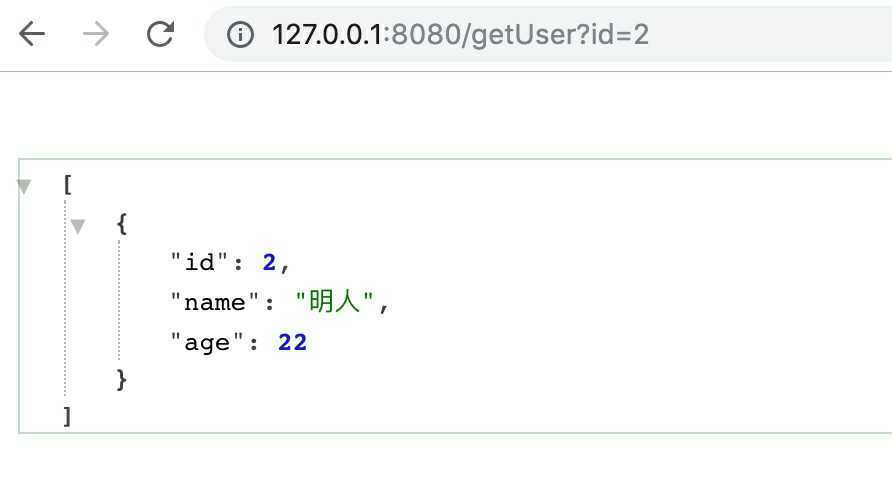
http://127.0.0.1:8081/getUser?id=2可以正常查到数据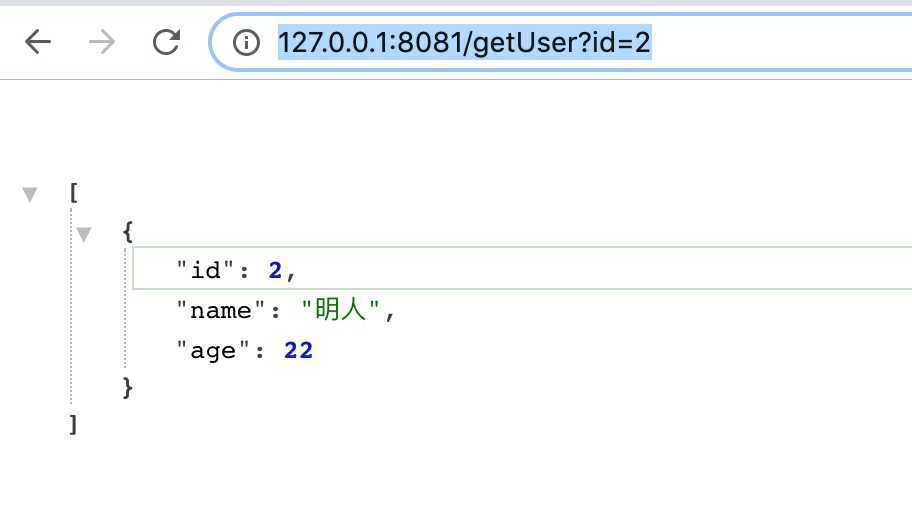
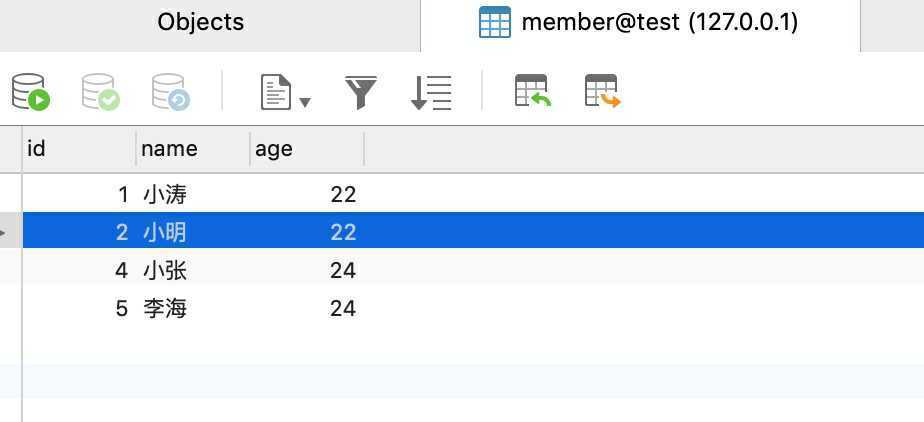
http://127.0.0.1:8080/remoKey ,注意此时清除的是8080端口的缓存,http://127.0.0.1:8080/getUser?id=2,可以重新查询到数据库中的值“小明”,但是可以发现8081端口下的缓存也被清除了,这就是配置了EhCache集群的缘故。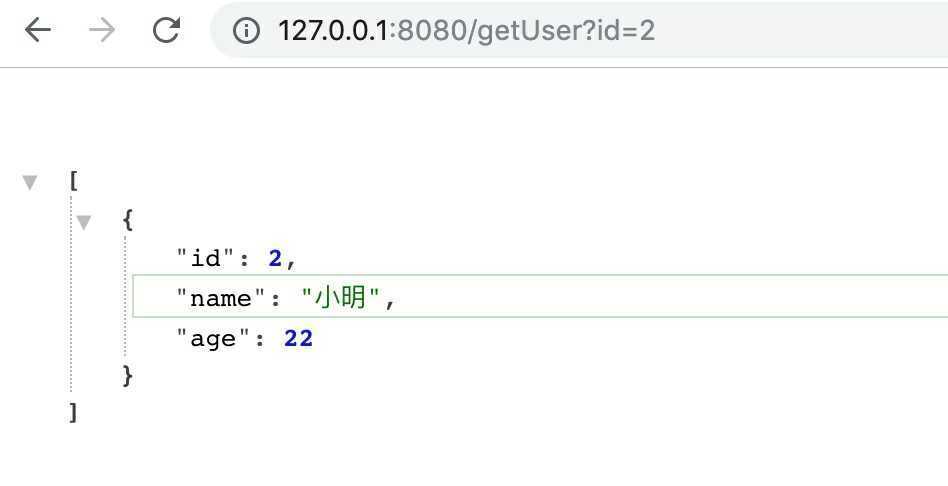

EhCache从1.7版本开始,支持五种集群方案,分别是:Terracotta、RMI、JMS、JGroups、EhCache Server
你如何知道集群环境中的其他缓存?
分布式传送的消息是什么形式?
什么情况需要进行复制?增加(Puts),更新(Updates)或是失效(Expiries)?
采用什么方式进行复制?同步还是异步方式?
期望值的数据,如果存在直接返回,如果不存在就查询数据库让后在将数据库缓存,
这个时候如果缓存系统因为某写原因宕机,造成服务无法访问,那么大的量请求直接穿透到数据库,最数据库压力非常大。
这时候我们让ehcache作为二级缓存,当redis服务器宕机后,可以查询ehcache缓存。
这样能够有效的扛住服务器请求压力。
标签:情况 没有 基础 宕机 开发 生产 ehcache ppi 项目配置
原文地址:https://www.cnblogs.com/haoworld/p/ehcache-ji-chu-zhi-shi-xue-xi.html